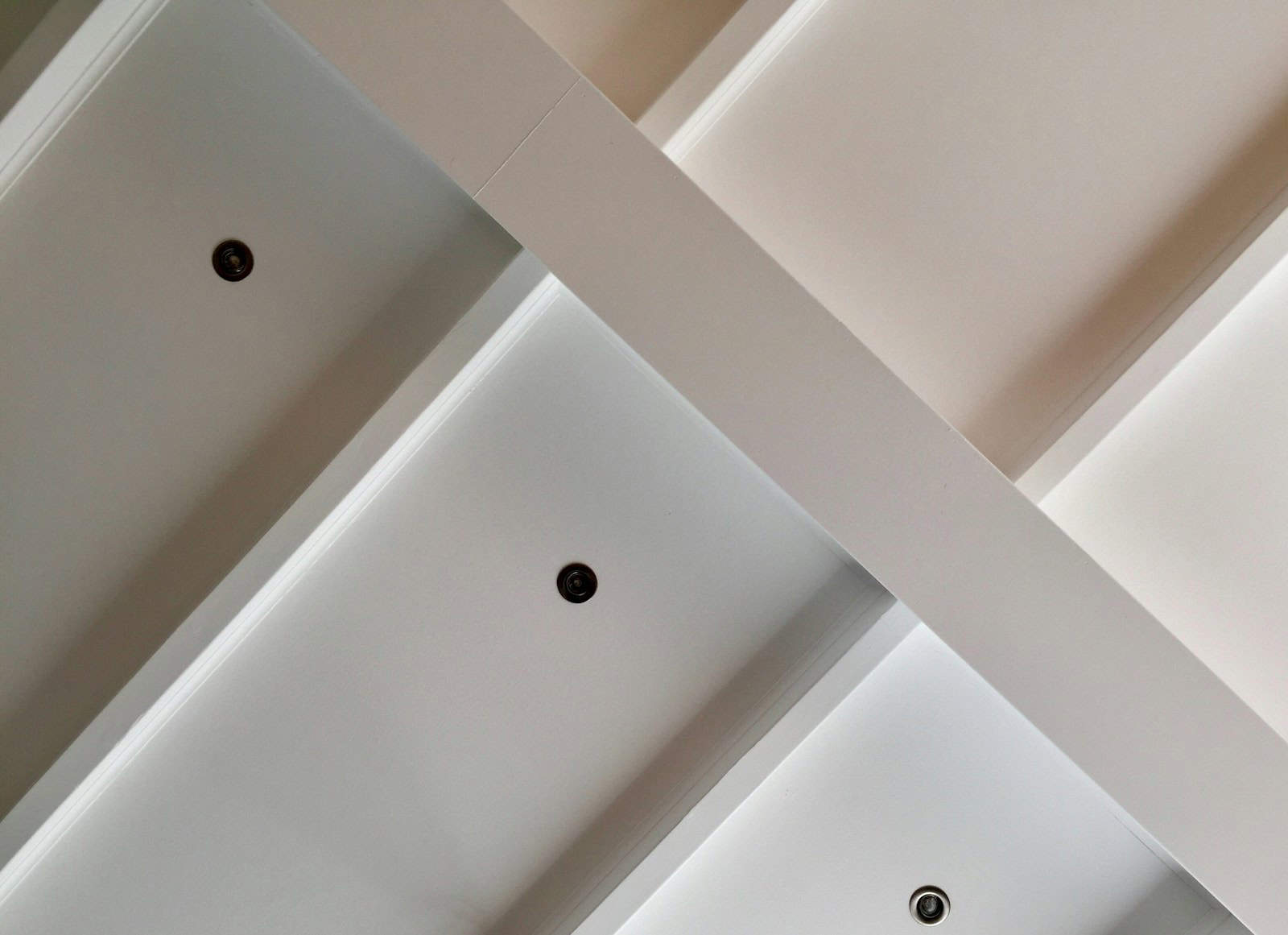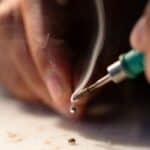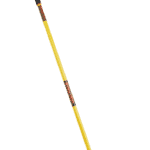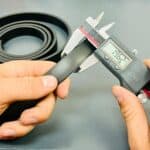Fixing a hole in the ceiling may sound tough, but it’s actually quite simple with the right tools and steps. The basic process involves cleaning the area, applying a patch, and finishing with drywall compound. This guide will take you through each of these steps clearly and efficiently, so you can get your ceiling looking good as new.
Start by gathering your materials. You’ll need a utility knife, drywall patch, joint compound, a putty knife, and sandpaper. Safety gear like a dust mask and goggles will also help protect you from any debris. Clean the edges of the hole to make sure that the patch will stick well.
Next, apply the drywall patch over the hole and press it down firmly. Spread joint compound over the patch and blend it into the surrounding ceiling. Let it dry, then sand it smooth. Apply additional coats of joint compound as needed, sanding between each one. Your ceiling will soon be ready for painting, looking just like it did before.
Patching Up the Hole in Your Ceiling
Common Causes of Ceiling Holes
Several things can cause a hole in your ceiling. It’s good to know the cause before you fix it. Some common causes include:
- Water damage: A leaky roof or plumbing issue can cause water to seep through and weaken the ceiling, eventually leading to a hole.
- Impact damage: A forceful impact from an object, such as a thrown toy or a fallen tree branch, can puncture the ceiling.
- Electrical work: Sometimes, electricians need to cut holes in the ceiling to install or repair wiring or fixtures.
- Pest infestations: Certain pests, like rodents or insects, can chew through ceiling materials, creating holes.
Tools and Materials Needed
Before you start patching the hole, gather these tools and materials:
| Tool/Material | Description |
|---|---|
| Measuring tape | Measure the hole and the patch material. |
| Utility knife | Cut the drywall patch to size. |
| Drywall saw | Create clean edges around the hole. |
| Pencil | Mark measurements and cutting lines. |
| Drywall patch kit | Includes patch material, adhesive, and sandpaper. |
| Putty knife | Apply and smooth out the joint compound. |
| Paint (optional) | Match the ceiling color if needed. |
| Safety glasses and gloves | Protect your eyes and hands. |
Repair Steps
- Prepare the area: Remove any loose debris or damaged material around the hole. If the hole is caused by water damage, address the source of the leak first.
- Measure and cut the patch: Use the measuring tape to determine the size of the hole. Cut a drywall patch slightly larger than the hole using a utility knife.
- Secure the patch: Apply adhesive to the back of the patch. Press the patch firmly into the hole, making sure it is flush with the surrounding ceiling.
- Apply joint compound: Use a putty knife to spread joint compound over the patch and the surrounding area. Feather the edges of the compound for a smooth transition.
- Sand and repeat: Once the compound is dry, sand it smooth. Apply a second coat of compound, feathering the edges again. Repeat the sanding process after the second coat dries.
- Prime and paint (optional): If you plan to paint the ceiling, apply a coat of primer to the patched area. Once the primer is dry, paint the ceiling to match the existing color.
Remember, repairing a hole in the ceiling can be a DIY project, but if the hole is large or caused by a serious issue, it’s best to consult a professional.
Preparing for Ceiling Repair
Before repairing a hole in the ceiling, it’s important to follow safety steps, assess the damage accurately, and gather all the necessary tools and materials.
Safety Precautions
Safety should always come first. Wear safety glasses and a dust mask to protect your eyes and lungs from dust and debris. Make sure the area is well-ventilated. Use a sturdy ladder to reach the ceiling safely. Clear the area of any furniture and put a tarp on the floor to catch falling debris. Turn off any power that might run through the ceiling if you suspect electric wires are close by.
Assessing the Damage
Determine the size and cause of the hole. Check if there is any water damage from a leak in the roof or attic. Look for signs of mold or rot. Measure the hole to know the size of the patch needed. If the damage is extensive, it might be wise to consult a professional. This step ensures you plan the repair correctly and avoid future problems.
Gathering Tools and Materials
Collect all the tools and materials before starting the repair. You will need a drill, drywall screws, a drywall saw, and a utility knife. For the patch, have drywall repair patches or a piece of drywall cut to size. Use drywall tape and drywall compound to secure and smooth the patch. Keep a putty knife, sanding sponge, and taping knife handy for applying and sanding the compound. For larger holes, you might need furring board strips to provide support for the patch. Having everything ready makes the repair process go more smoothly.
Executing the Repair
To fix a hole in the ceiling, you need to secure a patch, apply joint compound, sand and prime, and finally paint the area. Follow these steps closely for the best results.
Securing the Patch
First, cut a piece of drywall to fit the hole. The patch should be slightly larger than the hole. Then, place plywood inside the ceiling hole and screw it to the ceiling. This will support the new drywall patch.
Next, secure the drywall patch to the plywood using drywall screws. Place screws around the edges of the patch. Ensure the screws are seated slightly below the drywall surface. This helps avoid any bumps after applying the joint compound.
Applying Joint Compound
Mix the joint compound to a smooth consistency. Apply a layer over the edges of the patch using a putty knife. Cover the screws as well.
Then, place drywall tape or fiberglass mesh tape over the seams of the patch. This helps strengthen the repair. Apply another thin layer of joint compound over the tape. Smooth it out to blend with the surrounding ceiling. Let the compound dry completely.
Sanding and Priming
After the joint compound dries, sand the repaired area with 120-grit sandpaper. Remove any bumps or ridges. The surface should be smooth and level with the rest of the ceiling.
Next, apply a coat of primer to the repaired area. Use a water-based primer for the best results. The primer helps the paint adhere properly and ensures an even finish. Allow the primer to dry.
Final Touches and Painting
Lastly, paint the repaired area with ceiling paint. Use a brush or roller to apply the paint. If the ceiling has a textured finish, match the texture as closely as possible. This could involve using a sponge or special tools.
Apply multiple coats if necessary. Let each coat dry fully before adding another. Check for any blemishes and touch them up if needed. This will ensure the repair looks seamless.
Frequently Asked Questions
To repair a hole in a ceiling, different materials and techniques are needed depending on the type and size of the hole. Here are simple answers to common questions about ceiling repairs.
What materials are needed to patch a large hole in a ceiling?
Essential materials include:
- Drywall or plasterboard pieces
- Drywall screws
- Joint compound
- Drywall tape
- Sanding sponge
- Stain-blocking primer
- Paint
A taping knife and a utility knife will also be useful.
What is the best technique for repairing a small plaster ceiling hole?
For small holes:
- Clean the hole.
- Use spackle or a joint compound to fill it.
- Sand smooth once dry.
- Apply a primer.
- Repaint the area.
How do you fix a hole in a plasterboard ceiling?
To fix a plasterboard ceiling:
- Cut out a section of plasterboard larger than the hole.
- Attach it with drywall screws.
- Tape the seams.
- Apply joint compound over the tape.
- Let it dry, then sand it smooth.
- Prime and repaint.
What is the procedure for repairing drywall ceiling water damage?
First, find and fix the leak. Then:
- Cut away damaged drywall.
- Replace with new drywall.
- Tape the joints.
- Apply joint compound.
- Sand smooth once dry.
- Prime with a stain-blocking primer.
- Repaint the area.
How can one temporarily cover a hole in the ceiling before repairing?
Covering a hole temporarily requires:
- A piece of cardboard or plywood
- Tape
Secure the piece over the hole using strong tape. This is a short-term solution and should not replace proper repair.
How much does it typically cost to repair a small hole in the ceiling?
Fixing a small hole could cost:
- Materials: $10-$30
- Professional repair service: $50-$150
Rates vary by location and hole size. Simple DIY repairs can save money.







